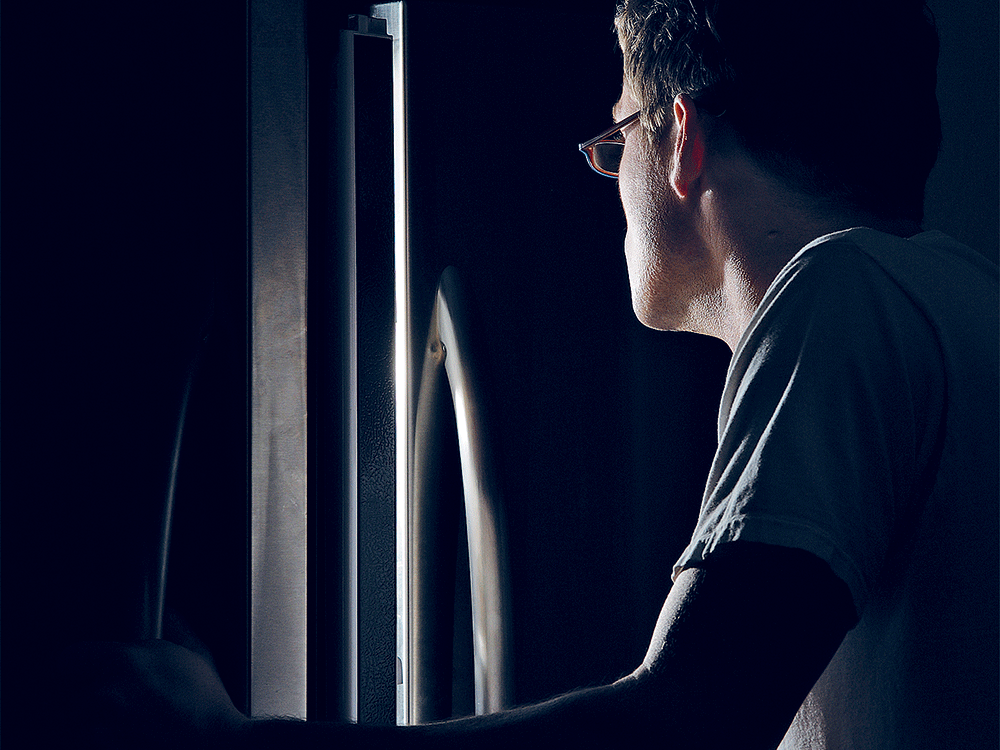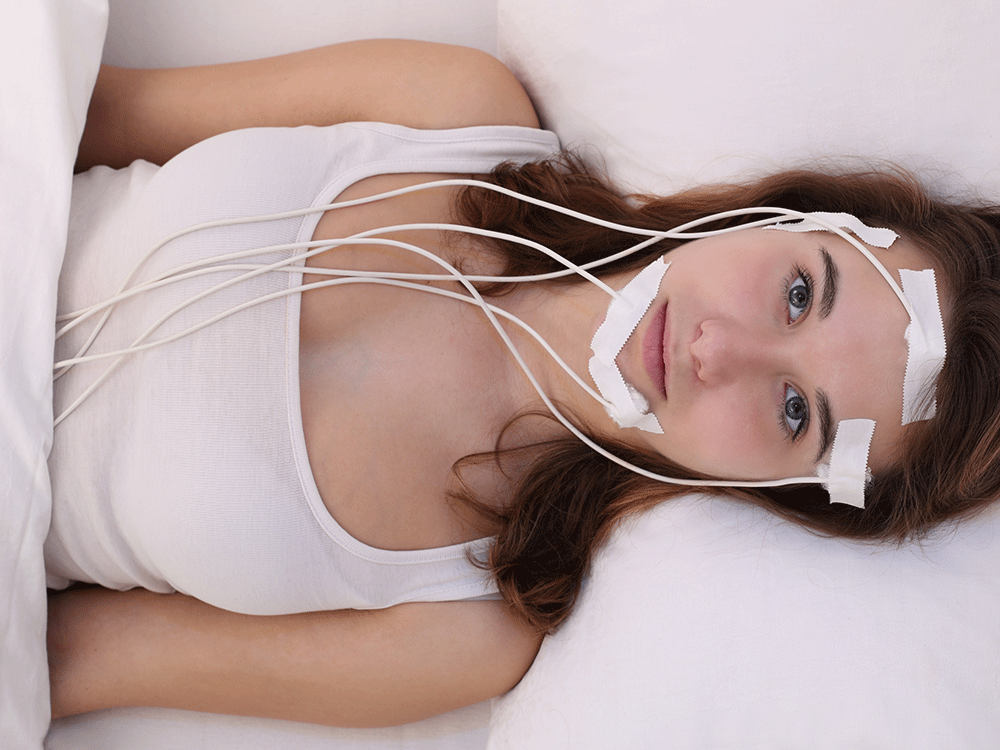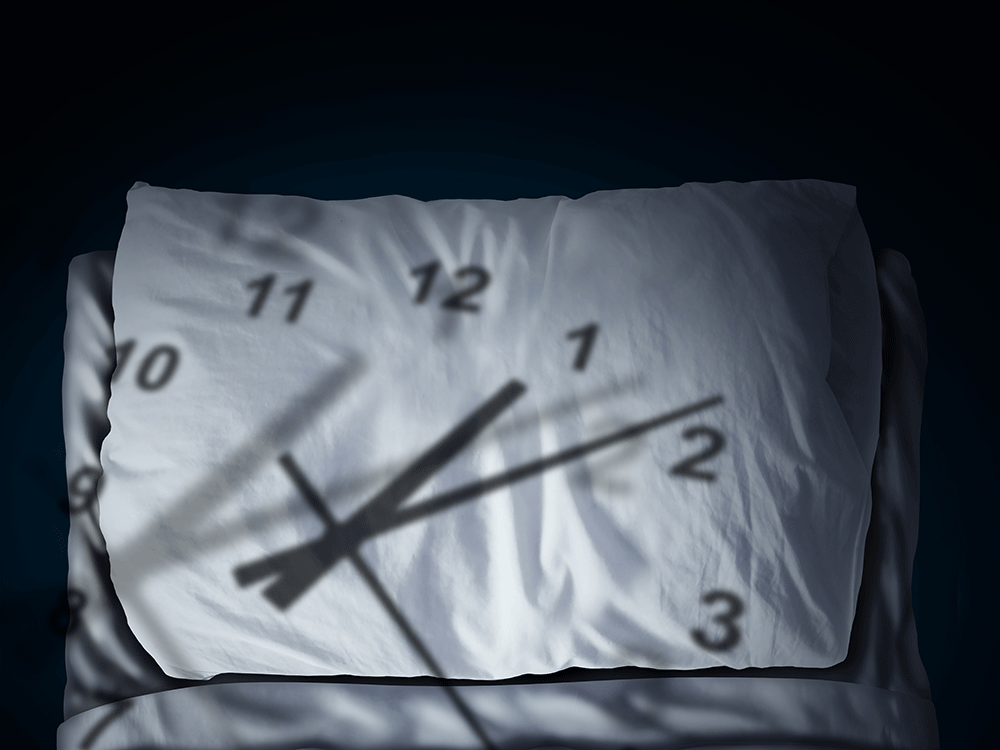
SRED Causes Sufferers to Binge Eat While Asleep
Imagine going to your new love interest’s house for an overnight visit, and when you wake up in the morning, you’re mortified at what destruction you might have left in the kitchen.
This alarming scenario is a real-life possibility for Dave. A 50-year-old who lives in Montreal and works in the film industry, Dave is a sleep eater. In the simplest terms, that designation refers to someone who rises in the middle of the night, in a somnolent or near-slumbering state, and devours whatever they can find. Sufferers are often unaware of what they’re doing, despite the fact that it may happen several days a week—even multiple times in the same night.
As is often the case with sleep eaters, Dave harbours a lot of shame. “How do you explain that you’ve consumed a new jar of peanut butter, a half loaf of bread and an entire carton of milk?” he says. “And if you happen to be up when I’m emptying the pantry, just try to stop me.”
Sleep-eating disorder, also known as sleep-related eating disorder (SRED), is a type of parasomnia—an umbrella term for a group of disruptive sleep-movement disorders—that’s notoriously difficult to treat. Compared to, say, sleep aggression or sleep-related sexual assault (both on the parasomnia scale), devouring the contents of a fridge sounds relatively harmless.
But it’s no mere case of the munchies: SRED, which has nothing to do with bad habits or bingeing, can change everything from a person’s body size to their relationship with loved ones. Dave recalls a mortifying cottage trip with friends where he left a massive mess in the shared kitchen—and devoured all the bread that had been designated for group meals. In general, he says, he has constant anxiety whenever he winds up sleeping in the same place as other people due to his sleep disorder.
Little is known about SRED, which wasn’t officially recognized as a sleep disorder until the early 1990s; even less is known about how to cure it. Those who struggle with it have been written off as uncontrollable gorgers, people unable to tame their own urges.
Even today, those with this rare sleep disorder are often presented with stigmatizing psychological assessments or told they’re simply not eating properly. Many family physicians don’t have enough information about this condition and thus misidentify SRED as a compulsion that’s not sleep related. A full diagnosis can only be acquired with video polysomnography–based sleep tests—which involve machines to monitor one’s heart rate, muscle activity and other functions—plus psychiatric and neurological testing.
Always tired and don’t know why? Here’s How Much Sleep You Really Need, According to Science.

Waking Nightmare: What Happens When Even the Doctors Are Stumped
Dr. Carlos H. Schenck, a professor of psychiatry at the Minnesota Medical School and the Minnesota Regional Sleep Disorders Center, was on the team that originally diagnosed SRED in 1991. A specialist in parasomnias, he describes sleep eating and related conditions as a triggering of instinctual behaviours that “emerge inappropriately” during sleep.
SRED, Schenck says, often arises during adolescence or early adulthood in sleepwalkers. This sleep disorder often causes sufferers to injure themselves while gaining access to food or preparing meals. And they may wake up to find a terrible mess—piles of wrappers and containers—that serves to heighten the anxiety the disorder causes.
Contrary to popular belief, SRED is not, Schenck says, a hunger-driven behaviour. “Most SRED patients do not have daytime eating disorders, such as bulimia nervosa or anorexia nervosa,” he says. Rather, it is a compulsion to consume: it’s uncontrollable and has nothing to do with hunger. As Schenck explains, the condition is the result of brain cells and circuits that misfire during sleep, leading to problematic behaviours—that is, it’s not a neurological disorder but a neurophysiological one.
SRED is a perfect storm of intersecting compulsions—to eat, to feel satisfied and comfortable and, of course, to sleep, which patients can only achieve after they have fed themselves. Sleep eaters only overeat when they are snoozing. And it’s this aspect of SRED that is perhaps the most perplexing.
We live in a culture that shames the overweight by telling them that their body size is entirely within their control, that their shape and fitness levels are physical manifestations of their willpower or lack thereof. Despite all scientific evidence to the contrary, body size has become a moral issue. Though SRED isn’t caused by a pre-existing eating disorder, it could easily lead to one.
Two of my friends have SRED. They share a common narrative: both started sleep eating at an early age, both were shamed for their “gluttony,” both grew larger as the sleep disorder intensified, and both were misdiagnosed multiple times. Today, neither feels understood, nor have they found a miracle cure.
Bianca, a writer in her 40s who lives in Toronto, began sleep eating at the age of 12. “For the first several years, it was primarily peanut butter on spoons, as evidenced by the lack of spoons in the kitchen drawer and the multitude of spoons under my bed,” she says.
She sought help at a sleep clinic 15 years ago, but the doctors were uninformed and unhelpful. “One focused on what ‘caused’ the disorder and said it was likely linked to the fact that I was denying myself certain foods during my waking hours, so my body was searching those out during sleep,” she says. “If that was the reason, I was happy to eat whatever I wanted during the day. Didn’t change a thing.”
Looking to wake up rested? Check out these 13 Secrets to Better Sleep Doctors Want You to Know!

Circadian Clocks: The Key to Unlocking the Mystery of Sleep Eating?
Dave has largely given up on professional treatment options and has developed his own plan, which includes “therapy, locking the fridge at night, leaving a small quantity of food on the counter, journaling, better eating habits during the day, [seeing] nutritionists and exercising myself to death,” he says.
These self-imposed strategies, Dave admits, either haven’t worked or have only worked temporarily. He even tried sleeping pills, but they just made him groggier and impaired his motor functions, and the behaviour ultimately became worse.
According to a 2006 study by Dr. R. Robert Auger of the Sleep Disorders Center at the Mayo Clinic Rochester in Minnesota, even those who study SRED can’t agree on whether it’s a nocturnal eating disorder, a full-on parasomnia or some combination. It’s also unclear if patients are actually asleep during outbreaks, why people with sleep-related eating disorders tend to be female, whether the disorder has a genetic component and which, if any, medications are effective in treating it. Scientists can’t even agree on what percentage of the global population suffers from SRED, with some citing approximately one per cent and others suggesting five.
Because sleep eating is so poorly understood, sufferers often just resign themselves to the condition and attempt to minimize its impact. Many, like Bianca, who’s given up on seeking out follow-up treatment, simply try to live with it. “Nothing has helped,” she says. “It just is what it is.”
Though Schenck acknowledges the tremendous toll SRED takes on sufferers, he sees promise in the latest findings. Circadian clocks, for example, represent a new frontier in trying to understand the syndrome. “It could be that the circadian clocks in the alimentary system are desynchronized from the sleep clock and are inappropriately activated during sleep,” he says, “thus promoting the drive to eat.”
So there is some small hope, at least. And as Dave notes, knowing there’s a specific diagnosis, however misunderstood, is helpful. “When you can put a name on a behaviour and learn that you are not alone, it goes a long way to releasing yourself from the shackles of self-loathing and shame.”
Want to keep reading? Check about these 12 Terrifying and Mysterious Symptoms—Diagnosed!
© 2016, R.M. Vaughan. From Van Winkle’s. vanwinkles.com.